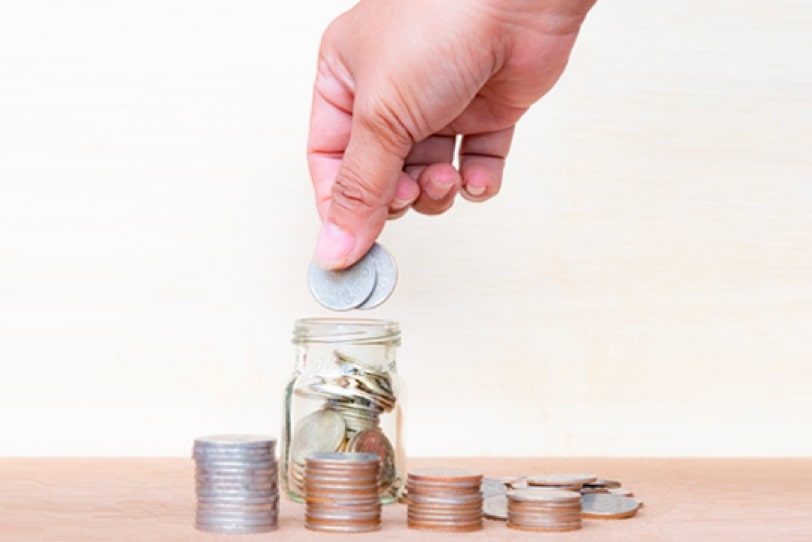The side hustle revolution
Can a side gig help you reach financial goals?
For most of us, there are only two actionable ways to grow our wealth, and hit financial goals: the first is to save money, and the other is to try and earn more. Between the two however, savings alone is more limiting: there’s an upper limit to how much we can save, and if our income is low, it may never suffice to reach our goals. As such, many of us have a bigger interest in side hustles - a way to use our spare hours to try and raise our income. But can this be sufficient to reach our financial goals? It depends on a number of factors:
First, we need to quantify the financial goals
Wanting to “earn more money” is not a good financial goal, as there’s no specifics to measure it. A better example would be quantified goals, such as the following:
- An Income Replacement Rate (IRR) of 70% of your current income, from the age of 65 to 90
- A total retirement fund of $1.5 million, upon reaching the age of 67
- Sufficient funds to go on a $75,000 year-long world trip, before you turn 55
- A shorter-term goal, such as raising $35,000 to get an additional degree
Setting your financial goals is a separate issue that differs for everyone, so it’s best to discuss this with a financial representative. You do need to do this first though, or else it’s impossible to know if your side hustle will suffice.
How to tell if your side hustle will help you reach your financial goals
- Work out initial capital and expenses
- Understand market size and demand
- Determine if you can consistently hit the targeted income level
- Compare time versus money
1. Work out initial capital and expenses
Starting your side hustle will rarely be free. Even if you’re just providing a form of consultancy, such as being a fitness coach, you may need to pay for courses and certification, as well as marketing. It can be tricky to work out how much you’ll spend initially, so speak to others in the same business to get a sense of your start-up costs.
As a general rule of thumb, you need to have sufficient capital to sustain you for the first year of business. You may not be turning a profit - or even breaking even - during this time, so you must be financially prepared to handle losses.
Do note that it’s common to go through a few different side hustles before you find one that works. Whilst a side business is profitable, finding it and starting is almost never cheap.
2. Understand market size and demand
Not every skill you choose to market will be equally lucrative. In Singapore, for example, tuition services are a massive $1.4 billion-a-year industry; which explains why so many people turn to it as a form of side-income (assuming they have the relevant qualifications). Conversely, more niche skills may not generate as much income.
That being said, you don’t necessarily have to target billion-dollar markets: so long as you make a sufficient amount to hit your financial goals, even a niche market may suffice. But you do need to research this market, and identify what people will pay for, or how much. An excellent tool you can use are Google surveys: these cost nothing to make, and can generate useful feedback before you start.
3. Determine if you can consistently hit the targeted income level
Once you have a financial goal, you can set a targeted amount - such as generating an additional $1,000 a month, $2,000 a month, or so forth. The income generated should exceed any monthly costs such as marketing.
A side hustle is stable when you can generate the targeted income fairly consistently, over a period of about a year. If you often cannot meet the targeted income, or if you meet the target in very few months of the year, it may be a sign that you should look for something more sustainable.
It’s important to emphasise consistency over episodic windfalls. For example: if you manage to double your expected income in one month, but subsequently make little or nothing over the remaining months, the event may just be a fluke; it’s not indicative of long-term success.
4. Compare time versus money
A simple way to do this is to compare how much you make per hour at work, versus at your side hustle. If you earn $50 an hour with your regular job, and only $20 an hour with your side hustle, that’s a clear sign you should still prioritise your main job.
(This doesn’t mean you should quit your side hustle if it’s making money; only that you should service your side hustle strictly after work hours, without jeopardising your main source of income).
If you’re very successful however, a time may come when your side hustle is generating more money per hour than your regular job. At that point, you may want to consider if it’s worth switching it from a side hustle to your full-time job.
Above all, focus on safety during your side hustle
The health risks can be subtle: a side hustle that leaves you sleep-deprived can lead to long term health complications, and side hustles that require you to drive (e.g., Private Hire or courier jobs) raise the risk of road accidents.
At the very least, ensure you’re probably covered, such as with a personal accident plan with high medical reimbursement. You should also complement your side hustle with a well-balanced, diversified portfolio, which protects your long term financial plans even as you try to find your footing. Look for insurance plans that can combine proper savings and wealth growth, along with protection.
Finally, do check with Human Resources if your current employer allows side hustles. Some employers have restrictions on what types of side businesses you can do, and you shouldn’t put your career at risk just for a bit of extra money.
Let us match you with a qualified financial representative
Our financial representative will answer any questions you may have about our products and planning.








